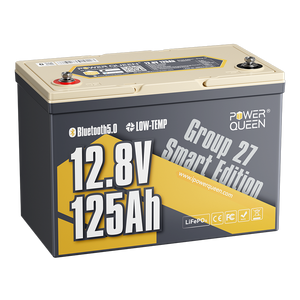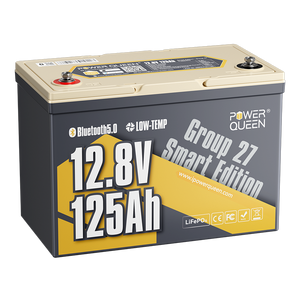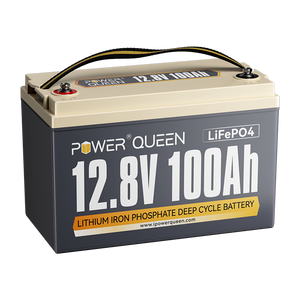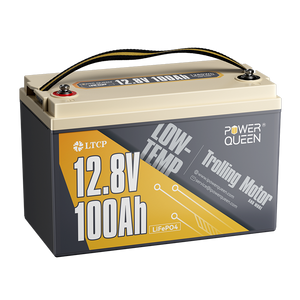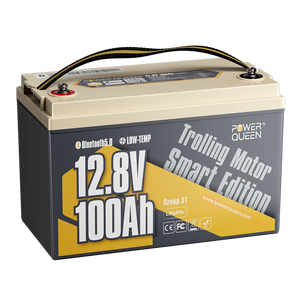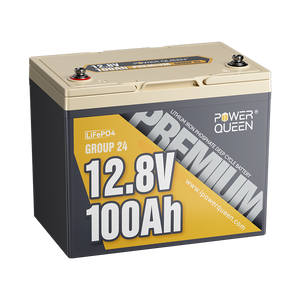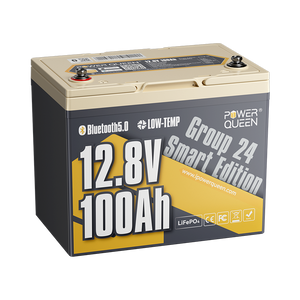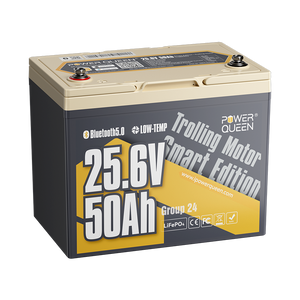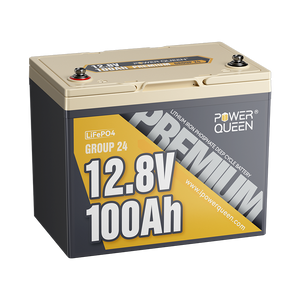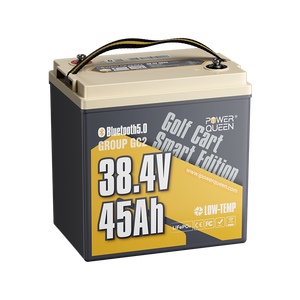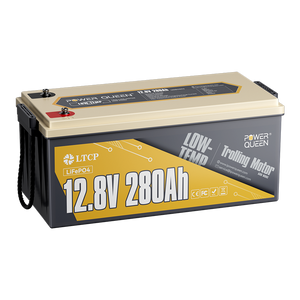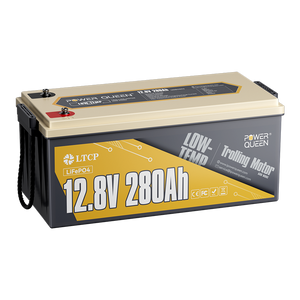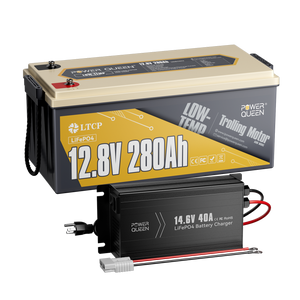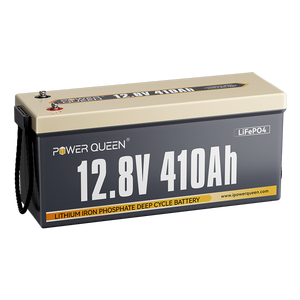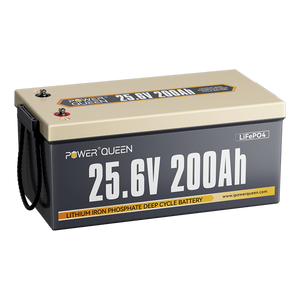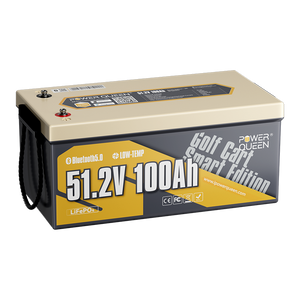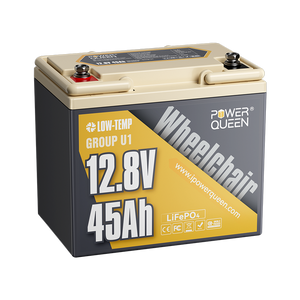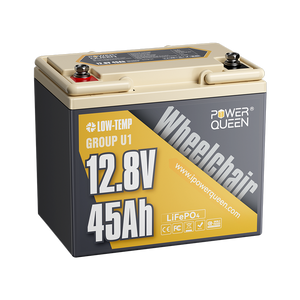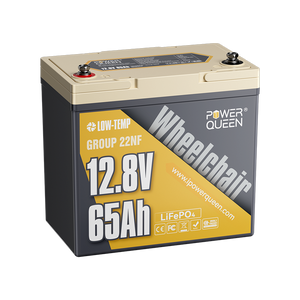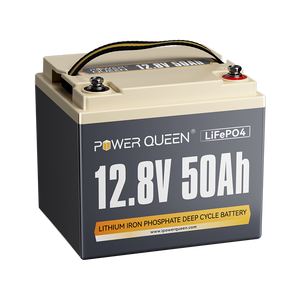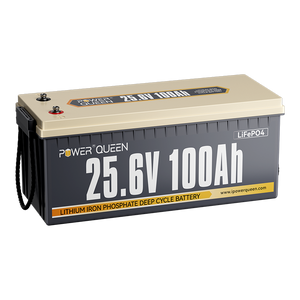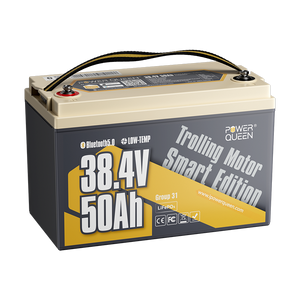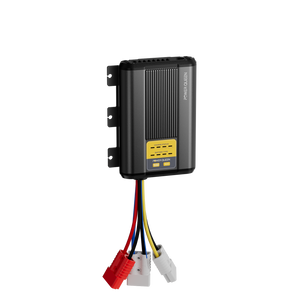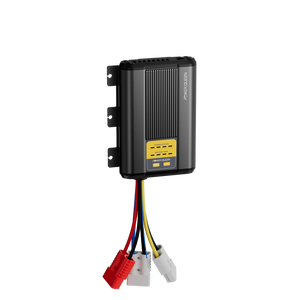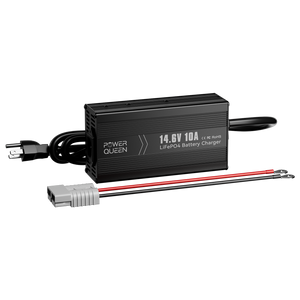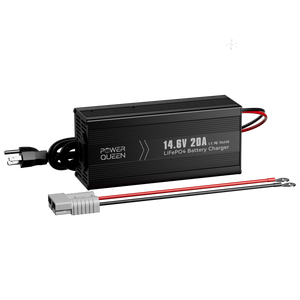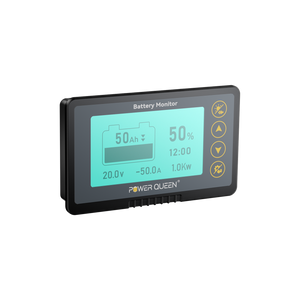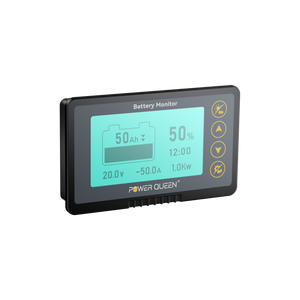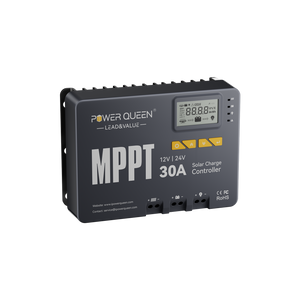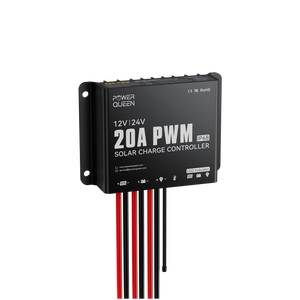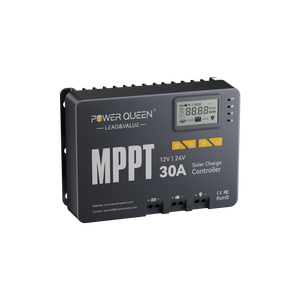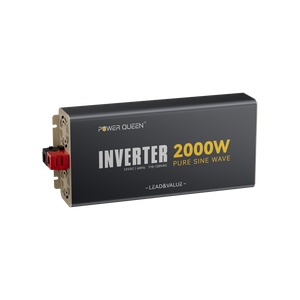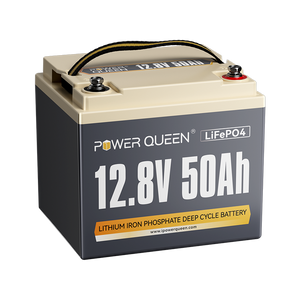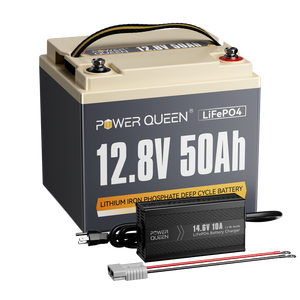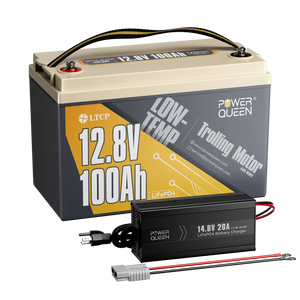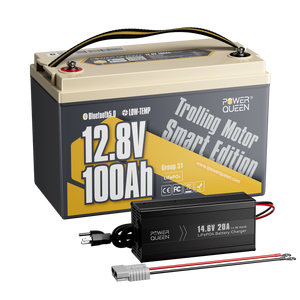Golf Cart Battery Maintenance for Beginners
No matter how powerful or high-performing your golf cart battery is, it won't last if you skip proper maintenance. Regular upkeep is essential because it directly affects your cart's performance and longevity.
Golf cart batteries have a limited lifespan, so consistent maintenance is key to ensuring they run at their best. This includes regular charging, proper watering, and occasional replacements—similar to taking care of a car.
If you're new to this and unsure where to begin, this beginner's guide will walk you through golf cart battery maintenance. Let's get started!
Table of Content
- Part 1. Before Anything Else—Know Your Golf Cart Batteries
- Part 2. How to Maintain Golf Cart Batteries
- 2.1 Assess Your Battery
- 2.2 Regular Cleaning and Inspection
- 2.3 Maintain the Right Water Level
- 2.4 Proper Charging and Storage
- 2.5 Avoid Deep Discharges
- 2.6 Use a Battery Monitor
- 2.7 Battery Temperature Management
- Part 3. Troubleshooting Common Golf Cart Battery Issues
- Part 4. 5 Helpful Tips to Extend Golf Cart Battery Life
- Part 5. Keep Your Golf Cart Battery in Top Shape
Part 1. Before Anything Else—Know Your Golf Cart Batteries
If this is your first time maintaining golf cart batteries, it's important to understand their unique characteristics. Unlike regular batteries, golf cart batteries are specifically designed for prolonged use and frequent discharging.
There are two main types of golf cart batteries:
- Lithium Batteries: These rechargeable batteries store energy through the reversible intercalation of Li⁺ ions into electronic solid conductors. Lithium batteries are much lighter than lead-acid batteries, which means your golf cart will be lighter and faster with a lithium battery installed.
- Lead-Acid Batteries: These rechargeable batteries rely on a chemical reaction between lead and sulfuric acid to generate power. While heavier than lithium batteries, they are still a popular option for golf carts.



The lifespan of your golf cart battery depends on factors such as depth of discharge, charging cycles, and environmental conditions. Shallow discharges are preferable, as frequent deep discharges and charging cycles can reduce battery capacity. Additionally, exposing the battery to extreme temperatures can negatively impact its performance.
Part 2. How to Maintain Golf Cart Batteries
Proper golf cart battery maintenance is crucial, as even small mistakes can affect your battery's performance and lifespan, putting your investment at risk.
Our team is here to guide you through everything, from evaluating the battery to managing temperatures, so you can keep your battery in top shape.
If you're ready to dive into golf cart battery maintenance, here are the essential tips you need to know.
2.1 Assess Your Battery
The first step in maintaining your golf cart battery is a thorough inspection and assessment. Start by checking for any visible signs of physical damage, such as cracks, leaks, or distortions in the battery case. If you spot any of these issues, it may be time for repairs or even a replacement.
Lead-acid batteries typically last up to six years, while lithium-ion batteries can last around a decade. To ensure your battery performs at its best, keep track of the time between charges and monitor any changes in capacity, keeping its overall lifespan in mind.
2.2 Regular Cleaning and Inspection
Keeping your golf cart battery clean is essential for maximizing its lifespan. Dirt and debris can accumulate on the terminals, leading to reduced power output and poor connectivity. Use a wire brush and a damp cloth to remove any buildup.
Regular inspection is just as important. Check for cracks in the casing, as well as leaks or corrosion around the terminals and cables. Watch for signs of swelling or bulging, and ensure that the battery tops are dry and thoroughly cleaned.
2.3 Maintain the Right Water Level
Driving your golf cart with a dehydrated battery is a definite no, as it can severely impact your cart's performance. Maintaining proper water levels is essential for keeping the electrolyte balance in check. Both overfilling and underfilling can lead to issues like overheating, exposed plates, and reduced capacity.
To avoid these problems, regularly inspect the water level in your battery. It should be slightly above the plates but remain below the bottom of the filler neck.
When the water level is low, carefully add water until it reaches the proper level. Be mindful not to overfill or underfill, as either can disrupt the electrolyte balance. Additionally, always make sure to add water after the battery has been fully charged.
2.4 Proper Charging and Storage
Just like using the wrong charger can damage your smartphone, using an incorrect charger for your golf cart battery can also cause harm. Always use the charger that came with your battery to avoid potential damage. For more information, you might want to read: Can I Charge a Lifepo4 Battery With a Lead Acid Charger?
Typically, the store where you purchased the battery will provide a manual or instructions for proper charging. Make sure to follow these guidelines.
Additionally, avoid overcharging the battery, as it can cause excessive heat buildup, which may damage the battery and impair its performance.
Maintaining a regular charging schedule is crucial. If you use your golf cart frequently, make sure to charge the batteries after each use. If you use the cart less often, charge the batteries at least once a month. Both overcharging and deep discharging can reduce the battery’s lifespan.
When the cart isn’t in use, store the battery in a cool, dry place. Extreme temperatures can cause significant damage to the battery.
2.5 Avoid Deep Discharges
Let's examine deep discharges more closely. A deep discharge occurs when the battery’s charge is completely depleted. One common mistake among golf cart owners is neglecting to charge the battery when the cart is not in use. Unlike cars, golf carts are not always in use.
Deep discharges can significantly harm battery health. Avoid allowing the batteries to drop to a low charge level.
Even if the cart is not being used, it's crucial to charge the batteries at least once a month. This practice will help extend the battery’s lifespan, maintain optimal performance, prevent sulfation, improve efficiency, and reduce overall costs.
2.6 Use a Battery Monitor
Just like in automobiles, a battery monitor or indicator is crucial for avoiding deep discharges. This tool helps you keep track of charge levels and ensures you recharge in time.
A battery monitor provides a “dashboard” view of your battery’s charge level. If it shows the charge at 20 to 30 percent, it's time to start recharging. Avoid waiting until the level drops to zero percent.
2.7 Battery Temperature Management
Maintaining the proper temperature for your golf cart battery is crucial. Exposure to extreme temperatures can damage the battery and negatively impact its performance and lifespan.
If you won't be using your golf cart for several weeks or months, remove the battery and store it in a cool, dry place.
During hot summer months, keep the battery in a cool, shaded, and well-ventilated area to prevent overheating. In colder months, store the battery in a dry, insulated location with moderate temperatures to avoid freezing and condensation.
To simplify your golf cart battery maintenance, consider creating a routine checklist for personal or business use.
Part 3. Troubleshooting Common Golf Cart Battery Issues
As a new golf cart owner, it's important to familiarize yourself with the most common issues that can arise with golf cart batteries. Knowing how to troubleshoot these problems is essential for maintaining optimal performance. Here are some of the most frequent issues you'll encounter:
3.1 Reduced Battery Life
Improper maintenance, deep discharges, and environmental factors can all shorten a battery's lifespan. To address this, be vigilant for signs of corrosion or sulfation.
Ensure the battery is properly hydrated and maintain the correct water level. Charge the battery regularly, and inspect it for any physical damage or leaks. Keep the cables and terminals clean, and store the battery in an appropriate location to protect it from adverse conditions.
3.2 Slow Performance
Removing the battery from charging before it reaches 100 percent or continuing to use old batteries can lead to slow performance.
To address this issue, use a battery gauge to monitor the charge level and ensure you prepare the battery for charging before it drops to zero.
Additionally, regular inspection and cleaning of the terminals and cables are essential. Be sure to replace old batteries to maintain optimal performance.
3.3 Battery Not Charging
If your golf cart battery isn't charging, it could be due to faulty connections, a malfunctioning charger, or even a dead battery. Fortunately, there are steps you can take to resolve this issue.
Start by inspecting and cleaning the terminals and connections for any signs of corrosion. Check the cables and fuses for damage as well.
If the battery still isn't charging, test the charger to ensure it’s functioning properly.
If the problem persists, verify the battery's charging level and condition. If necessary, replacing the battery might be the final solution.
3.4 Battery Swelling
A swollen golf cart battery is a clear sign of overcharging, exposure to extreme heat, or internal damage. Unfortunately, a swollen battery cannot revert to its original shape. The best and often only solution is to replace it with a new battery.
Part 4. 5 Helpful Tips to Extend Golf Cart Battery Life

Here are some hacks to further extend the life of your golf cart battery:
- Avoid fully discharging your battery, as deep discharges can shorten its lifespan.
- A voltmeter is an essential tool for maintaining your golf cart battery, helping you ensure the voltage stays within the correct range.
- Always verify that your charger is functioning properly, as a faulty charger can damage the battery.
- Additionally, be mindful of overloading your cart beyond its capacity, as this can also impact the battery's lifespan.
- Finally, never mix old and new batteries, as this can lead to uneven discharge rates and reduced performance.
Part 5. Keep Your Golf Cart Battery in Top Shape
A top-performing golf cart is the result of a responsible owner and a well-maintained battery.
Remember, the process doesn’t stop with just purchasing and installing the battery; proper maintenance is also crucial. Be sure to follow the checklist provided and seek professional help if needed.
However, if you choose the right type of golf cart battery, you can minimize the hassle of maintenance. Lithium batteries, for instance, require minimal to no maintenance compared to lead-acid batteries. For a reliable lithium-ion option, consider Power Queen lithium-ion batteries.
Power Queen is a top provider of high-quality, affordable, and environmentally friendly energy solutions. We focus on helping our customers optimize energy usage and storage in a cost-effective and sustainable manner.
Discover more about Power Queen and our energy solutions! Explore how you can power your golf cart, RVs, vehicles, and off-grid setups. Join our vibrant online community to connect with fellow golfers and automotive enthusiasts.
